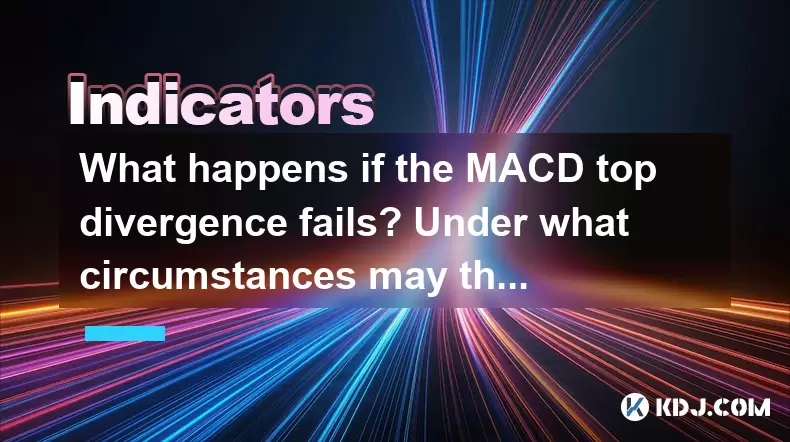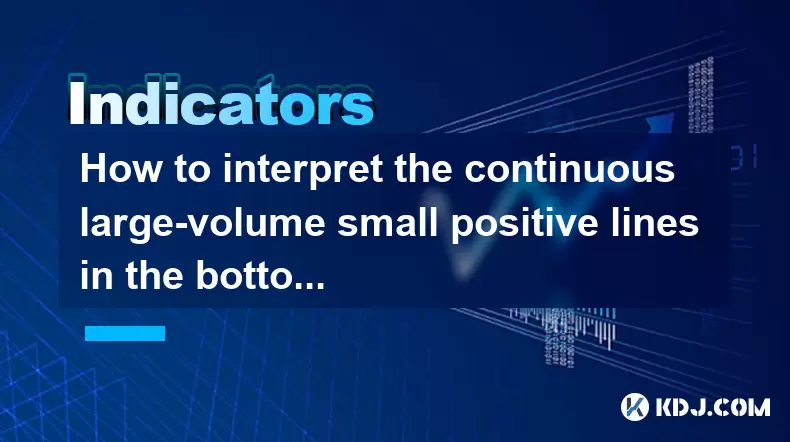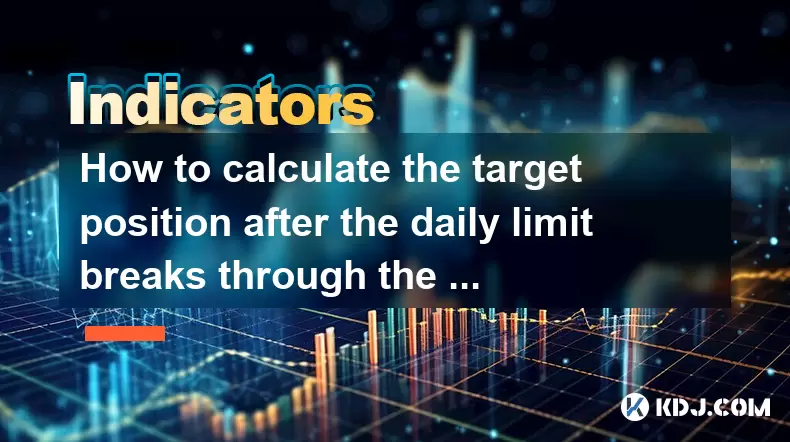-
 Bitcoin
Bitcoin $101,898.5005
-0.75% -
 Ethereum
Ethereum $2,258.1125
-1.07% -
 Tether USDt
Tether USDt $1.0004
0.01% -
 XRP
XRP $2.0178
-2.93% -
 BNB
BNB $624.0243
-1.53% -
 Solana
Solana $134.3298
-0.90% -
 USDC
USDC $0.9999
0.01% -
 TRON
TRON $0.2675
-2.05% -
 Dogecoin
Dogecoin $0.1538
-1.96% -
 Cardano
Cardano $0.5482
-1.11% -
 Hyperliquid
Hyperliquid $35.5636
5.45% -
 Bitcoin Cash
Bitcoin Cash $453.4902
-1.66% -
 Sui
Sui $2.5134
-2.97% -
 UNUS SED LEO
UNUS SED LEO $9.1292
1.77% -
 Chainlink
Chainlink $11.8457
-1.60% -
 Stellar
Stellar $0.2312
-2.73% -
 Avalanche
Avalanche $16.9721
0.29% -
 Toncoin
Toncoin $2.7549
-3.82% -
 Shiba Inu
Shiba Inu $0.0...01081
-1.10% -
 Litecoin
Litecoin $80.8250
-0.71% -
 Hedera
Hedera $0.1374
0.21% -
 Monero
Monero $305.4827
-2.36% -
 Ethena USDe
Ethena USDe $1.0006
0.00% -
 Dai
Dai $1.0000
-0.01% -
 Polkadot
Polkadot $3.2085
-3.12% -
 Bitget Token
Bitget Token $4.0845
-3.13% -
 Uniswap
Uniswap $6.3353
-1.63% -
 Pi
Pi $0.5085
-0.70% -
 Pepe
Pepe $0.0...08913
-3.82% -
 Aave
Aave $232.7090
-0.58%
What happens if the MACD top divergence fails? Under what circumstances may the divergence signal fail?
MACD top divergence can fail due to market volatility, overbought conditions, external influences, and time frame mismatches, impacting trading decisions.
May 24, 2025 at 07:42 am

In the world of cryptocurrency trading, technical analysis tools like the Moving Average Convergence Divergence (MACD) play a crucial role in helping traders make informed decisions. MACD top divergence is a popular signal used to predict potential trend reversals, but like any technical indicator, it can sometimes fail. Understanding the reasons behind these failures and the circumstances under which they occur is essential for traders looking to enhance their trading strategies.
Understanding MACD Top Divergence
MACD top divergence occurs when the price of a cryptocurrency reaches a higher high while the MACD indicator forms a lower high. This discrepancy suggests that the bullish momentum is weakening, and a bearish reversal might be imminent. Traders often use this signal to exit long positions or enter short positions, anticipating a downward price movement.
Reasons for MACD Top Divergence Failure
Despite its popularity, MACD top divergence can fail to predict the expected price reversal. Several factors contribute to these failures:
- Market Volatility: High volatility can lead to false signals as the market experiences rapid price swings. In such conditions, the MACD might not accurately reflect the true momentum of the market.
- Overbought/Oversold Conditions: If a cryptocurrency is in an overbought state, the MACD might show a divergence, but the price may continue to rise due to sustained buying pressure.
- External Influences: News events, regulatory announcements, or significant market developments can override technical signals, causing the expected reversal to fail.
- Time Frame Mismatch: Divergence signals can vary significantly across different time frames. A divergence seen on a shorter time frame might not hold on a longer time frame, leading to false signals.
Circumstances Under Which Divergence Signals May Fail
To better understand when MACD top divergence might fail, it's important to consider the specific circumstances that can lead to these failures:
- Strong Bullish Sentiment: If the overall market sentiment remains strongly bullish, even a clear divergence signal might not be enough to trigger a reversal. Traders and investors might continue to buy, pushing the price higher despite the divergence.
- Lack of Confirmation: Divergence signals are more reliable when confirmed by other indicators, such as the Relative Strength Index (RSI) or volume. If these additional indicators do not support the divergence, the signal is more likely to fail.
- Trend Strength: In a strong uptrend, a single divergence signal might not be sufficient to reverse the trend. Multiple divergences or a significant change in market conditions might be required to trigger a reversal.
- False Breakouts: Sometimes, the price might break out of a resistance level, only to quickly reverse. If this false breakout occurs around the time of a divergence signal, it can lead to a failure of the divergence.
Practical Examples of MACD Top Divergence Failure
To illustrate these concepts, let's look at a few practical examples from the cryptocurrency market:
- Bitcoin (BTC) Example: Suppose BTC/USD reaches a new high at $50,000, but the MACD forms a lower high. A trader might interpret this as a top divergence and expect a price drop. However, if a major positive news event occurs, such as the approval of a Bitcoin ETF, the price could continue to rise, invalidating the divergence signal.
- Ethereum (ETH) Example: Imagine ETH/USD showing a top divergence at $2,000, with the MACD indicating a lower high. If the RSI remains in the neutral zone and trading volume does not decrease significantly, the divergence signal might fail, and the price could continue its upward trajectory.
How to Minimize the Impact of Divergence Failures
While it's impossible to predict all divergence failures, traders can take steps to minimize their impact:
- Use Multiple Indicators: Combining the MACD with other indicators like the RSI, Stochastic Oscillator, or volume analysis can provide a more comprehensive view of market conditions and increase the reliability of divergence signals.
- Wait for Confirmation: Instead of acting immediately on a divergence signal, traders can wait for additional confirmation from price action or other indicators. This approach can help filter out false signals.
- Adjust Time Frames: Analyzing divergence signals across multiple time frames can provide a clearer picture of market trends. A divergence signal that appears on both short and long-term charts is generally more reliable.
- Risk Management: Implementing strict risk management rules, such as setting stop-loss orders and only risking a small percentage of the trading capital on each trade, can help mitigate the impact of failed divergence signals.
Case Studies: Real-World Instances of MACD Top Divergence Failures
To further understand how MACD top divergence failures occur in real-world scenarios, let's examine a few case studies:
- Case Study 1 - Ripple (XRP): In early 2021, XRP/USD exhibited a top divergence when the price hit $0.80, but the MACD showed a lower high. Despite this signal, the price continued to rise to $1.00 due to strong bullish sentiment and positive news regarding Ripple's legal battles. The divergence failed because the market sentiment and external factors overrode the technical signal.
- Case Study 2 - Cardano (ADA): In mid-2021, ADA/USD showed a top divergence at $2.50, with the MACD forming a lower high. However, the RSI remained in the overbought zone, and trading volume did not decrease significantly. As a result, the price continued its upward trend, reaching $3.00. The lack of confirmation from other indicators contributed to the failure of the divergence signal.
Frequently Asked Questions
Q1: Can MACD top divergence be used as a standalone signal for trading decisions?
A1: While MACD top divergence can provide valuable insights into potential trend reversals, it is generally not recommended to use it as a standalone signal. Combining it with other technical indicators and considering market conditions can enhance its reliability and reduce the risk of false signals.
Q2: How often do MACD top divergence signals fail in the cryptocurrency market?
A2: The frequency of MACD top divergence failures can vary widely depending on market conditions, the specific cryptocurrency, and the time frame being analyzed. In highly volatile markets, failures might be more common due to rapid price swings and external influences.
Q3: Are there any specific cryptocurrencies where MACD top divergence signals tend to be more reliable?
A3: The reliability of MACD top divergence signals can vary across different cryptocurrencies. Generally, cryptocurrencies with higher liquidity and trading volume, such as Bitcoin and Ethereum, might exhibit more reliable signals due to more consistent price movements and less susceptibility to manipulation.
Q4: How can traders differentiate between a true MACD top divergence and a false one?
A4: Differentiating between true and false MACD top divergences requires a holistic approach. Traders should look for confirmation from other technical indicators, analyze market sentiment, consider the strength of the current trend, and be aware of any external factors that might influence price movements. Additionally, analyzing the same divergence across multiple time frames can provide further clarity.
Disclaimer:info@kdj.com
The information provided is not trading advice. kdj.com does not assume any responsibility for any investments made based on the information provided in this article. Cryptocurrencies are highly volatile and it is highly recommended that you invest with caution after thorough research!
If you believe that the content used on this website infringes your copyright, please contact us immediately (info@kdj.com) and we will delete it promptly.
- Bitcoin Price Wobbles: Crash Watch and Key Support Levels
- 2025-06-23 16:25:12
- Navigating the Crypto Seas: Charting a Course Through Bull Runs and Bear Markets
- 2025-06-23 16:25:12
- BNB Price Check: Stablecoin Surge vs. Prediction Rollercoaster
- 2025-06-23 14:25:12
- Metaplanet's Bitcoin Bonanza: Holdings Skyrocket Amidst Market Swings
- 2025-06-23 14:25:12
- Global Meltdown, Investors, and Safe Havens: Navigating the Storm
- 2025-06-23 14:30:12
- NFT Sales Snapshot: Guild of Heroes, Polygon, and the Market's Shifting Sands
- 2025-06-23 15:25:12
Related knowledge

Is the high opening and low closing and huge volume the next day a trap for more?
Jun 23,2025 at 05:07pm
Understanding High Opening and Low Closing with Huge VolumeWhen traders observe a high opening followed by a low closing and massive volume the next day, it often raises concerns about whether this is a trap set by larger players in the market. This pattern typically indicates strong volatility within a short period, which can confuse retail investors. ...

How to interpret the MACD's second golden cross on the water but insufficient volume?
Jun 23,2025 at 05:01pm
Understanding the MACD Indicator and Its SignificanceThe Moving Average Convergence Divergence (MACD) is a widely used technical analysis tool in cryptocurrency trading. It helps traders identify potential buy or sell signals by showing the relationship between two moving averages of an asset’s price. The MACD line, signal line, and histogram are the th...

How much volume is required for the W-bottom to break through the neckline of the time-sharing chart?
Jun 23,2025 at 04:21pm
Understanding the W-Bottom Pattern in Cryptocurrency TradingThe W-bottom pattern is a popular technical analysis formation used by traders to identify potential bullish reversals. It typically appears at the end of a downtrend and resembles the letter 'W' on price charts. In the context of cryptocurrency trading, where volatility is high and trends shif...

How to interpret the continuous large-volume small positive lines in the bottom area?
Jun 23,2025 at 04:43pm
Understanding the Basics of 'Large-Volume Small Positive Lines'In technical analysis, especially within the cryptocurrency market, the pattern known as 'large-volume small positive lines' refers to a scenario where the price increases slightly (small positive candlestick) but is accompanied by unusually high trading volume. This phenomenon typically occ...

How to read the sideways consolidation after the bottom volume and long positive line?
Jun 23,2025 at 02:28pm
Understanding the Sideways ConsolidationWhen analyzing cryptocurrency charts, sidewards consolidation refers to a phase where prices move within a narrow range without a clear upward or downward trend. This pattern often appears after significant price movements, such as a sharp increase followed by a period of equilibrium between buyers and sellers. In...

How to calculate the target position after the daily limit breaks through the previous high?
Jun 23,2025 at 02:57pm
Understanding the Daily Limit BreakthroughIn cryptocurrency trading, a daily limit typically refers to the maximum price movement allowed within a single trading day on certain exchanges. When this limit is breached, especially when it surpasses the previous high, traders often seek to calculate the target position or expected price movement following s...

Is the high opening and low closing and huge volume the next day a trap for more?
Jun 23,2025 at 05:07pm
Understanding High Opening and Low Closing with Huge VolumeWhen traders observe a high opening followed by a low closing and massive volume the next day, it often raises concerns about whether this is a trap set by larger players in the market. This pattern typically indicates strong volatility within a short period, which can confuse retail investors. ...

How to interpret the MACD's second golden cross on the water but insufficient volume?
Jun 23,2025 at 05:01pm
Understanding the MACD Indicator and Its SignificanceThe Moving Average Convergence Divergence (MACD) is a widely used technical analysis tool in cryptocurrency trading. It helps traders identify potential buy or sell signals by showing the relationship between two moving averages of an asset’s price. The MACD line, signal line, and histogram are the th...

How much volume is required for the W-bottom to break through the neckline of the time-sharing chart?
Jun 23,2025 at 04:21pm
Understanding the W-Bottom Pattern in Cryptocurrency TradingThe W-bottom pattern is a popular technical analysis formation used by traders to identify potential bullish reversals. It typically appears at the end of a downtrend and resembles the letter 'W' on price charts. In the context of cryptocurrency trading, where volatility is high and trends shif...

How to interpret the continuous large-volume small positive lines in the bottom area?
Jun 23,2025 at 04:43pm
Understanding the Basics of 'Large-Volume Small Positive Lines'In technical analysis, especially within the cryptocurrency market, the pattern known as 'large-volume small positive lines' refers to a scenario where the price increases slightly (small positive candlestick) but is accompanied by unusually high trading volume. This phenomenon typically occ...

How to read the sideways consolidation after the bottom volume and long positive line?
Jun 23,2025 at 02:28pm
Understanding the Sideways ConsolidationWhen analyzing cryptocurrency charts, sidewards consolidation refers to a phase where prices move within a narrow range without a clear upward or downward trend. This pattern often appears after significant price movements, such as a sharp increase followed by a period of equilibrium between buyers and sellers. In...

How to calculate the target position after the daily limit breaks through the previous high?
Jun 23,2025 at 02:57pm
Understanding the Daily Limit BreakthroughIn cryptocurrency trading, a daily limit typically refers to the maximum price movement allowed within a single trading day on certain exchanges. When this limit is breached, especially when it surpasses the previous high, traders often seek to calculate the target position or expected price movement following s...
See all articles
























































































